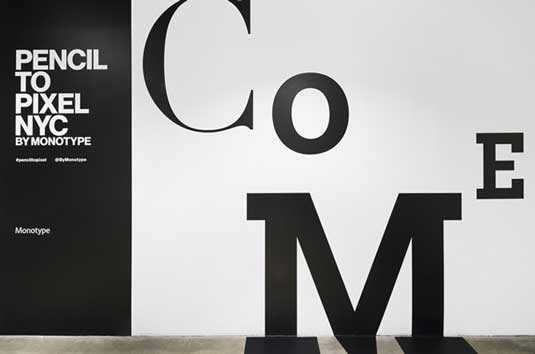How typography can give your brand personality
A unique typeface can really help your brand stand apart from the crowd, as these brands found.
In today's hyperconnected world, we exchange more words than ever before. And the proliferation of channels through which we communicate means our devices are often flooded with information.
But for brands, there's much more to these words than just the message they convey. As consumers increasingly look to each other for inspiration and guidance – through the likes of social media, blogs, vlogs and reviews – brands also need to become more communicative, hands-on and human, with their own distinct personality.
While typography is an often overlooked tool, as the core vehicle of communication, it should be the first port of call when it comes to shaping brand personality. At Lippincott, we call the shift from brand to consumer focus 'The Human Era'; a period in which brands must build connections through authentic stories, signature innovations and inspiring experiences that are rich, powerful and lasting.
Unique typefaces

As a result, we are seeing companies straying from standardised typefaces because they just don't reflect their brand. Rather than being confined to the computer's pre-loaded system fonts, brands are creating their own unique typefaces, in tune with their increasingly human side, and claiming ownership of their identities. It's our idiosyncrasies that make us stand out from the crowd.
Digital media is the key catalyst for this shift. Brand messaging used to be confined to a limited number of channels; but now websites, interconnectivity and more mobile devices, bringing with them the need for mobile-first and responsive interfaces, mean the ongoing roll of typefaces that brands feed into the world is of vital importance.
As well as needing to connect on a pictorial level with the brand logo and related imagery, type has to work across a variety of situations, carrying the brand story when the environment is very informational and remaining functionally credible in a highly promotional context.
Being human

But just as typefaces need to be consistently effective, they must also perform like humans, showing different parts of the brand's personality at different times, which is why the design process is particularly intricate and multi-layered.
Daily design news, reviews, how-tos and more, as picked by the editors.
Having recently curated a new collection of ‘human' typefaces with Monotype, a leading provider of typefaces, technology and expertise for creative applications, Lippincott's mission was to showcase how different personalities can be achieved through type. Launched last month, Brands with Heart presents a number of typefaces that connect on an emotional level.
One of the most interesting features about these typefaces is that they reveal a glimmer of the typographer behind them.
The right tone

When creating new typefaces for brands, the conversations between brand and typographer need to be extremely thorough in order to achieve the right personality and an appropriate tone of voice.
While the typeface can have any number of quirks and distinctions, it needs to be cohesive with the entire brand story, from livery right through to the apps customers carry in their pockets. The question of what the brand is trying to say to its consumers should lie at the heart of the design process.
In The Human Era, a new environment of radical transparency means brands must emotionally connect like never before. Even the most monolithic organisations like airlines and financial services are ripe for change.
Shaking things up

While in the past, regulations have imposed a certain way of engaging with customers, refusing to allow a customer-centric vision, the most successful companies today are those shaking things up in the way they talk to the outside world.
By becoming more original with the brand experiences they offer and, most importantly, speaking directly and transparently with customers, even institutionalised companies are freeing themselves from the robotic, standardised methods of yesterday. While a typeface might seem like a creative abstraction, it's actually a crucial element to make companies more human.
In an increasingly connected, competitive media landscape, typeface is a vital tool to allow brands to leverage the ever-expanding multitude of channels through which to communicate with consumers and build meaningful, lasting relationships.
Liked this? Read these!
- Browse our collection of the best free fonts
- We reveal the best web fonts for your site
- Download fonts from these top resources
- Read our selection of the finest free ebooks for designers
- What does an art director actually do?
